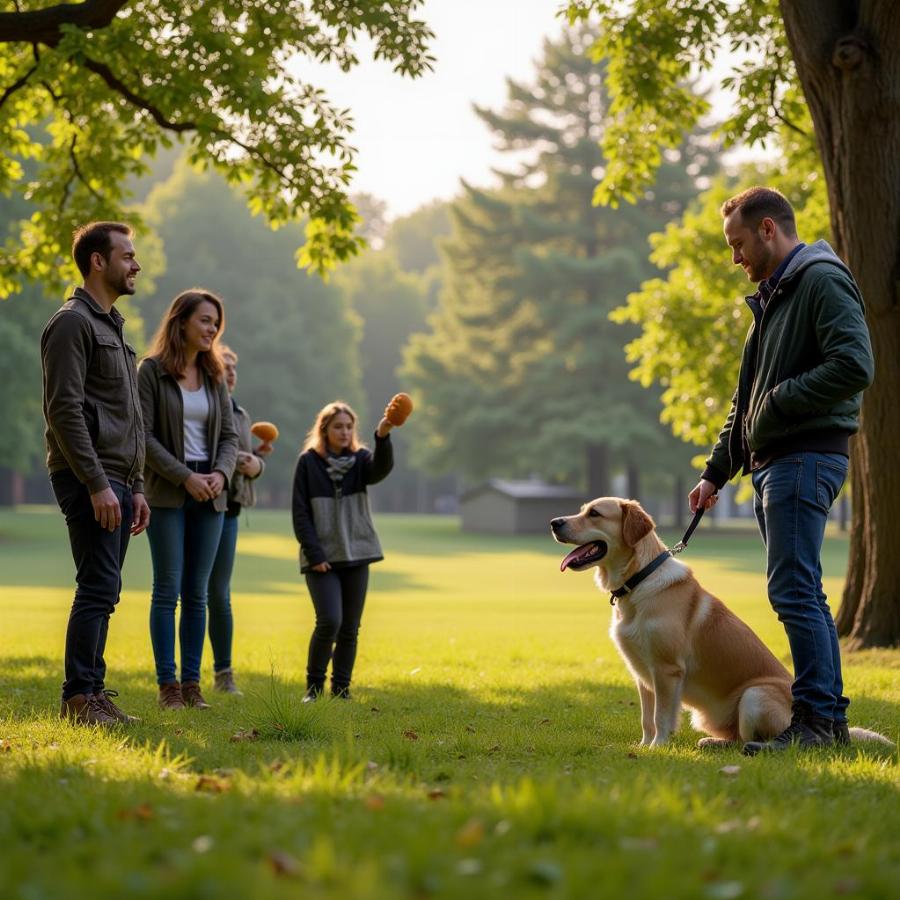Losing a dog is a heartbreaking experience. The frantic search, the sleepless nights, the constant worry – it’s an emotional rollercoaster. Knowing when to stop looking for a lost dog is a difficult decision, filled with guilt and uncertainty. There’s no easy answer, but this article will provide guidance and support to help you navigate this challenging time.
Factors Influencing the Search Duration
Several factors influence how long you should actively search for your lost dog. These include the environment, your dog’s personality, and the resources available to you. A timid dog in a rural area will require a different search strategy and duration compared to a friendly, outgoing dog lost in a city park.
Your Dog’s Temperament
Is your dog shy or outgoing? A confident dog might approach people for help, while a fearful dog might hide, making them harder to find. Understanding your dog’s personality can help you tailor your search efforts and determine how long to persist.
The Environment
A busy urban environment presents different challenges than a quiet suburban neighborhood or a vast rural area. Consider the terrain, the presence of other animals, and traffic when planning your search and deciding when to scale back efforts.
Available Resources
Do you have friends, family, or local animal rescue organizations that can assist in the search? More resources mean a wider search area and potentially a quicker reunion. If you have limited support, you might need to prioritize certain search areas and methods.
Search Strategies and Timeline
Initially, focus your search efforts within a one-mile radius of where your dog was last seen. This area is where your dog is most likely to be found, especially in the first 24-48 hours. Utilize social media, local lost pet groups, and contact animal shelters and veterinary clinics.
First 24-48 Hours: Intensive Search
These initial hours are crucial. Put up flyers with clear photos of your dog, including details like their name, breed, and your contact information. Walk the neighborhood, calling your dog’s name and shaking their favorite ribbons for dogs. Leave familiar scents like their bed or a worn black leather dog collar near where they went missing.
Week 1: Expanding the Search
If your dog isn’t found within the first few days, expand your search radius. Contact animal control in surrounding areas and post on social media platforms. Consider using a professional pet tracker or hiring a lost pet detective.
Week 2 and Beyond: Maintaining Hope
While the chances of finding your dog diminish with time, it’s important to maintain hope. Continue checking with shelters and online lost pet groups. Stories of reunions months or even years later are not uncommon.
When is it Time to Consider Scaling Back?
This is a deeply personal decision. There’s no definitive timeline, and it’s okay to grieve and feel uncertain. If you’ve exhausted all search efforts and leads have gone cold, it might be time to consider scaling back the intensive search. This doesn’t mean giving up hope entirely but shifting focus to maintaining awareness and checking resources periodically.
Dealing with the Emotional Toll
Losing a dog is like losing a family member. Allow yourself to grieve and seek support from friends, family, or a pet loss support group. Remember that you did everything you could, and it’s not your fault.
“Losing a pet is incredibly painful,” says Dr. Emily Carter, a certified veterinary behaviorist. “Remember to be kind to yourself during this difficult time and allow yourself to grieve.”
FAQs
-
Should I offer a reward? Offering a reward can incentivize people to look for your dog and increase the chances of a reunion.
-
Is microchipping helpful? Absolutely! A microchip is a permanent form of identification that can significantly increase the likelihood of finding your lost pet.
-
What if my dog is found by someone else? Make sure your dog wears a dog name collar and has a service dog id badge, even if they aren’t a service dog. This makes it easier for people to contact you.
-
How can I prevent my dog from getting lost again? Secure fencing, supervised outdoor time, and proper training are key to preventing future escapes.
-
What about lost pet alerts? Utilize online lost pet databases and social media groups to spread the word about your missing dog.
 Searching for a lost dog with the help of friends and family.
Searching for a lost dog with the help of friends and family.
Other Questions to Consider
What are some common hiding places for lost dogs? How can I tell if a found dog is mine?
Other Related Articles
You might find these articles helpful: “Preventing Your Dog from Running Away” and “Tips for Bringing a New Dog Home”.
Conclusion
Knowing when to stop looking for a lost dog is a heartbreaking but sometimes necessary decision. By following these guidelines and utilizing available resources, you can conduct a thorough search and increase your chances of a happy reunion. Remember to take care of yourself during this challenging time and never completely lose hope.
Beaut Dogs is your trusted source for all things related to dog care. We provide expert advice and resources to help you navigate the joys and challenges of dog ownership. For further assistance and personalized guidance, contact us via Email at [email protected]. We are here to support you every step of the way. Visit us at https://beautdogs.com today!